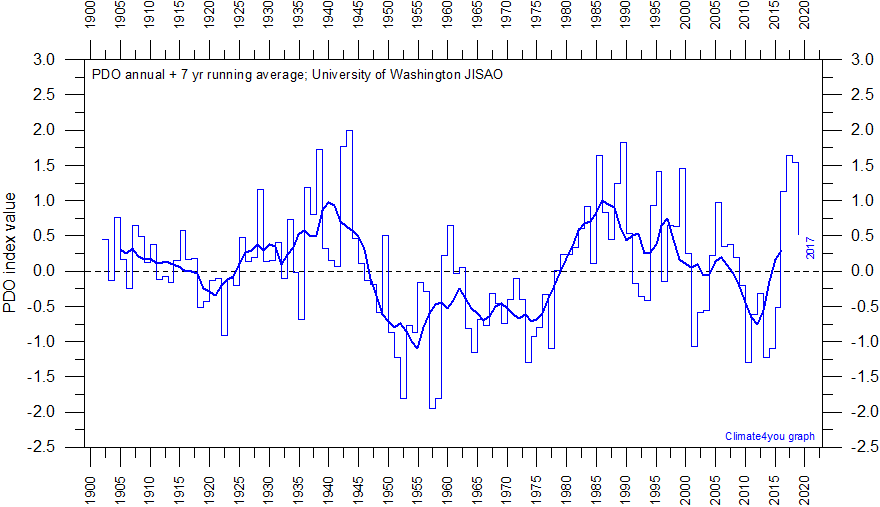Data Suggests Climate Entering 30 Year Cooling Period, Perhaps Longer
The apparent "decoupling" of global heat from atmospheric CO2 concentrations -- with the clear divergence of observed temperatures from projected temperatures -- provides mounting evidence for falsification of IPCC climate models.
Here is an excerpt from an article by Dr. Norman Page, which uses empirical data to contradict IPCC climate model-based projections (via WUWT):
To check the past years go to
ftp://ftp.ncdc.noaa.gov/pub/data/anomalies/annual.ocean.90S.90N.df_1901-2000mean.dat
and for monthly updates go to.
ftp://ftp.ncdc.noaa.gov/pub/data/anomalies/monthly.ocean.90S.90N.df_1901-2000mean.dat
The peak anomaly was .5207 in 2003.
2. Check the current phase of the Pacific Decadal Oscillation.

http://myweb.wwu.edu/dbunny/pdfs/aleo-easterbrook_ch5Relationship-multidecadal-global-temps-to-oceanic-oscillations.pdf

NOTE – A REASONABLE CASE CAN BE MADE THAT THE WARMING PEAKS OF A 60 YEAR PDO CYCLE AND THE 1000 YEAR SOLAR CYCLE COINCIDED AT 2000 +/- AND WE ARE LIKELY ON THE COOLING SLOPE OF BOTH.
The clearest empirical measure of solar activity is the solar magnetic field strength. On an empirical basis Livingston and Penn have shown that the decline in solar magnetic field strength suggests that sunspots could disappear by about 2015 signalling THE START OF A NEW MAUNDER MINIMUM WITH SIGNIFICANT COOLING.
For a semi-empirical estimate of the possible cooling if a Maunder Minimum does develop see http://pubs.giss.nasa.gov/docs/2001/2001_Shindell_etal_1.pdf
__WUWT Near Future Cooling
Of course no one has a perfect lock on predicting the future of climate or anything else. But there is more than sufficient doubt concerning IPCC model projections to block any large scale implementation of massive redistribution of funds -- ultimately in the $trillions of dollars -- based upon IPCC model output. Particularly since the IPCC and its sister UN organisations would be among the main beneficiaries of this extorted largesse.
In the eyes of faux environmental greens, there is no doubt that humans are bringing doom to the planet -- one way of the other. If they are forced to give up carbon hysteria doom, they will simply reach down into the muck of their own doom-seeking minds and scoop up another imaginary flavour of doom with which to terrify the dumbed down masses.
Best to keep on your toes with this lot.
Labels: Climate Grifters, climate models




























